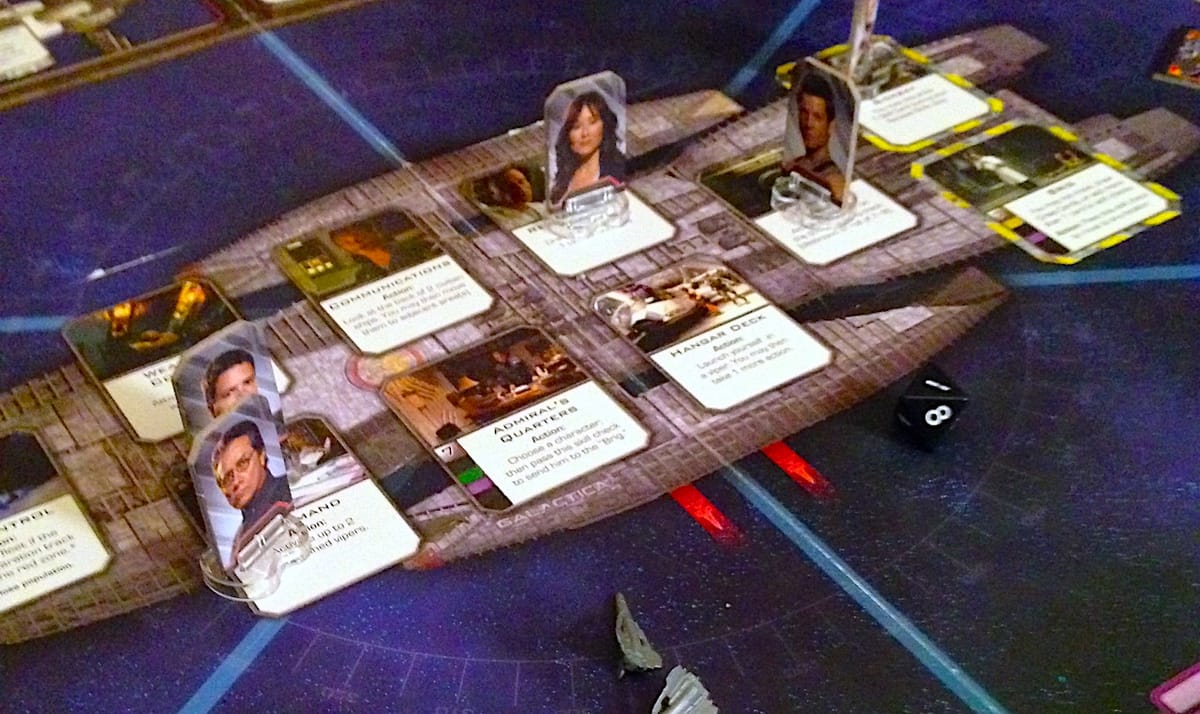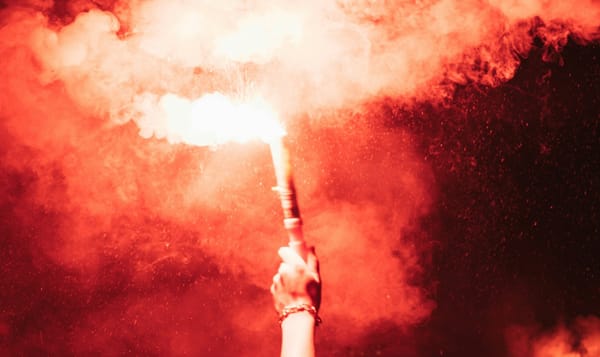after the pilot

In 2003, the TV miniseries Battlestar Galactica premiered in the united states. Battlestar Galactica is a gritty science fiction series set in a politically complicated universe. The concept of the show comes from the 1978 TV series of the same name. Here’s a quick summary: billions of humans live on the 12 colonies of Kobol, the planet that was the humans’ original home. They create a race of robots that becomes sentient and launches a rebellion against them. This war goes on for 12 brutal years before the robots, known as Cylons, declare a cease-fire and disappear. The Battlestar Galactica is a military vessel commissioned during the war. At the start of the series, they’ve converted it into a museum. Things are quiet.
On the 40th anniversary of the armistice, the Cylons launch a surprise nuclear attack on all 12 colonies. The Cylons also hack the military grid, crippling warships and shutting down defenses. Soon, the Battlestar Galactica and a band of civilian ships are all that’s left of humankind. These humans are on the run from the Cylons, fleeing to the mysterious planet of legend… known as… Earth. Cue music!
One year later, based on the success of the miniseries, the first episode of the TV series launched: ’33’. In 33, the episode begins in the middle of a tense situation and doesn’t let go. The Battlestar Galactica and its civilian fleet are still on the run from the Cylons. Interstellar travel, known as a jump, is a complex set of calculations that they do by hand to avoid hacking. Every jump they complete, after exactly 33 minutes, the Cylons find them and attack. Fighter ships must hold them off until the fleet can jump again. 33 is a gripping hour of television punctuated by dreamy flashbacks and war fatigue. While some consider 33 to be the pilot for the series, I think it’s an outstanding second episode.
act one: what’s in a pilot?
A pilot in this case is the first episode of a TV series. The pilot is an audience’s first introduction to a TV show’s setting, plot, and characters. The pilot has to do a lot of heavy lifting here. The writers, directors, and actors define most or all of the major characters. They also have to show you how their world (or galaxy, in this case) works. Does this world have magic or weird physics? Is this a drama set in an exciting and fast-paced emergency room? Or is it a quirky comedy set in an apartment or single-family home? Any plot points that are present are often there to portray all these dynamics. You have a lot of ground to cover to make the characters easy to understand and the world easy to recognize.
The pilot is also a pitch to the studios and network executives to sell the story and idea of this series. For many TV shows, pilots can be complete months or even years before studios buy the rest of the series. Executives watch the pilot on its own and then decide whether the series is worth purchasing. When it airs, viewers watch the pilot and decide if they like it. Even in our streaming era, a pilot makes or breaks the series. It can ignite a loyal fanbase or land with an unremarkable thud.
The second episode is different! When TV creators make the second episode, the pilot has already done a lot of the background work. Most of the world-building, the characters and their traits, are already established. The second episode continues to build on that storytelling, but it doesn’t have to go so broad. You can begin to get to know these characters in specific situations.
In 33, we see how the external stressors of sleep deprivation affect the people we met in the miniseries. Individual characters start to come out. Who’s resilient and still fighting after days without sleep? Who’s resorted to drug stimulants to stay alive? A person taking stims in the pilot might be an aspect of their character. A person taking stims in the second episode tells us how they’re responding to the plot.
act two: more than content
I described to you one of my favorite TV episodes from one of my favorite TV shows! People who create art for television and movies are currently on strike. The screenwriters’ guild and the actors’ guild are both fighting for decent wages. I know I watched a lot of TV during the pandemic when we didn’t leave the house. I know that streaming networks made billions in subscriptions. All the WGA and SAG-AFTRA are asking for is less than 1% of that profit boon.
If you want to support writers and actors, don’t boycott their media. Instead, if you have the means, donate to one of the funds keeping film and television workers afloat. They also help the many behind-the-scenes crew members who can’t get work during the strike. There’s the Entertainment Community Fund, The Union Solidarity Coalition, Groceries for Writers, and The Snacklist.
act three: what’s your second episode?
Second episodes set up a series almost as much as the pilot does. But we don’t have to work in TV, or even appreciate TV, to take lessons from that. Think about a project, accomplishment, or even the work you do.
What has your pilot episode set you up for? What are you excited to build on? What did you learn in the initial stages of the project? If you just completed a milestone, what are all the possibilities for what could happen next?
What changes or tweaks can you apply before you move forward? For instance, say your organization won a grant it had applied for. What did you or someone else write that you would do? Is it realistic or practical? Are the metrics you chose still accurate? How soon in the project cycle will you know? It’s always best to make those changes at the start rather than proceeding with those flaws.
What you do next is what matters. Plenty of shows never make it past the pilot. Sometimes a network sees the pilot and demands an overhaul before they’ll buy the series. And lots of shows get selected for a full season and then canceled part of the way through. The show failed to live up to whatever promise the network executives thought it had. Or the audience hated it! Either way, that show failed to tell the story it wanted to.
roll credits
Despite the obstacles, a good pilot will kick off a series in interesting ways that can get you to keep watching. What you create from there is up to you.



